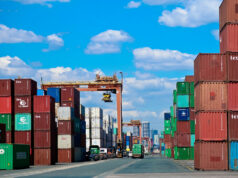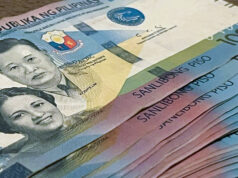August factory output growth slows
MANUFACTURING output continued to expand in August albeit at a slower pace compared to a month earlier, the Philippine Statistics Authority (PSA) reported last Friday.
According to the preliminary results from the PSA’s Monthly Integrated Survey of Selected Industries, factory output, as measured by the Volume of Production Index, rose 8.8% year on year, against the revised 11.9% growth output for July. Still, it was faster than the 0.3% growth posted in August 2017.
In the eight months to August, factory output growth averaged 13.1%, higher than the 4% recorded in last year’s comparable eight months.
Lifting growth during the month were upticks from the production of textiles (39.7%), petroleum products (37.9%), miscellaneous manufactures (26.6%), beverages (24.2%), paper and paper products (18.7%), machinery except electrical (14.7%), rubber and plastic products (11.9%), non-metallic mineral products (10.8%), and electrical machinery (10.4%).
Capacity utilization in August averaged 84.3%, with 11 of the 20 sectors tracked registering utilization rates of at least 80%.
Rolando T. Dy, executive director at the University of Asia and the Pacific’s Center for Food and Agribusiness, linked the growth slowdown to inflation and the shift in domestic consumption.
“The lower growth of food manufacturing may be due to: 1) High inflation [which] caused slowdown in demand [and] 2) the mass base shifted consumption to pay for higher food costs of rice, fish, meat and veggies,” Mr. Dy told BusinessWorld via e-mail.
Meanwhile, Rizal Commercial Banking Corp. (RCBC) economist Michael L. Ricafort associated the easing in factory activity to higher oil prices, and the weakness of the local currency that led to increased production costs.
“Manufacturers that use [imported] oil as inputs could have incurred higher production costs and could lead to higher prices and lower demand for their products…,” he said.
“Higher prices tend to reduce both demand and, in turn, production for manufactured products.”
Oil prices have been increasing for the past months, even jumping to its highest in nearly four years, due to tighter supply in the world market.
On the other hand, the local currency continued to trade at 13-year lows versus the greenback. It closed at 54.23 last Friday, nine centavos stronger from the previous day’s P54.32 finish.
Mr. Ricafort added that manufacturers are also affected by the rate hikes imposed by the Bangko Sentral ng Pilipinas (BSP) that resulted in the slowdown of borrowings, which in turn, weighed on manufacturing activity.
The BSP’s Monetary Board recently increased raised policy rates by another 50 basis points (bps) in its Sept. 27 meeting, marking the fourth consecutive tightening move this year as policy makers seek to rein in inflation expectations. This matched the central bank’s tightening move last month, bringing benchmark rates to five percent for overnight lending and four percent for overnight deposit.
Benchmark rates have now risen by a cumulative 150-bps so far this year.
Looking forward, RCBC’s Mr. Ricafort expected production growth to pick up in the closing months of the year with holidays and the government’s infrastructure spending seen to drive growth in the manufacturing sector.
There is also increased demand for Philippine manufacturing exporters “that are alternative suppliers to US and Chinese exporters” given the ongoing US-China trade war, he said. — Vincent Mariel P. Galang



